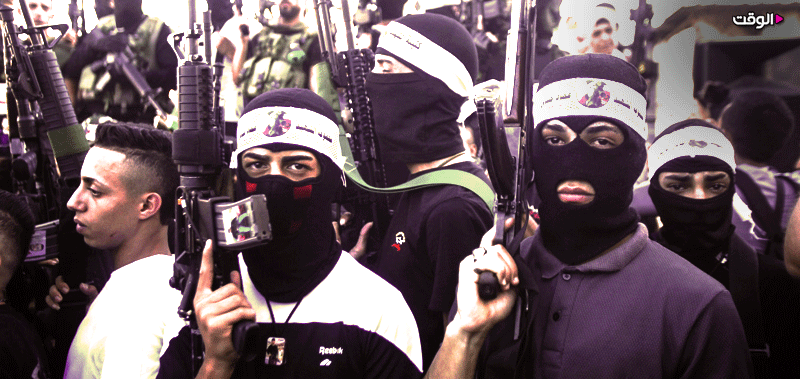Reports suggested that the occupation forces for the first time in two decades used weapons like Apache helicopters. Apache helicopters evoke the memory the Israeli offensives on the West Bank in the early 2000s beside D9 heavy bulldozers that demolished the Palestinian houses in the 2002 eight-day war and razed to the ground the center of the Jenin Refugee Camp, killing at least 52 civilians.
The recent operation was the second in a month targeting Jenin. A fortnight ago, too, when the Israeli forces attacked the flash point Palestinian city, Jenin Brigades resistance group launched a successful surprise counterattack near the camp, inflicting damages on them.
In the previous assault on the camp city, several Israeli military vehicles were damaged and five troops were severely injured.
In the recent attack on Jenin, at least 13 Palestinians were martyred and hundreds of others were injured, and about 3,000 residents of the camp were temporarily displaced. However, the offensive, despite Tel Aviv's initial planning for a week of bombing, could not last more than 48 hours and the Israelis were forced to withdraw from the camp. The New Arab news outlet reported that after the attack, the Israeli troops were caught in Palestinian shooting and rocket fire, and Apache helicopters were deployed to provide backup to the forces and military vehicles on the ground. Reports indicate that during the war on the camp, at least 40 points were targeted by Apache helicopters and combat drones.
Though the new generation of Palestinian fighters saw the Apaches for the first time in Jenin skies, the Palestinians who remember the 2002 offensive air offensive were no strangers to these attacks. Reportedly, it is the largest offensive in the West Bank since the second Palestinian intifada (revolt).
Will Jenin offensive spread to other areas?
As Israeli sources put it, Jenin offensive was pre-planned since last weeks and former Defense Minister Benny Gantz said that the offensive served a goal to create balance in the Israeli deterrence against Palestinian resistance factions. At the same time, it is unlikely that the Israeli regime seeks to expand Jenin offensive to other West Bank areas. In fact, the early withdrawal from Jenin demonstrated that the Israeli military now is too weak to fight more than 48 hours in the camp, and therefore, opening a new anti-Palestinian front in other areas is unimaginable.
Additionally, Tel Aviv is struggling with continuous internal political crisis and gaps over a controversial bill by hardline cabinet to curtail judicial powers. Over the past 6 months, the protests against Netanyahu have continued in unceasingly and in wide-ranging manner. Therefore, perhaps the occupation's military operation against Jenin was launched for media and political goals. In fact, even if the offensive did not have a military achievement for the occupation, according to the leaders of Tel Aviv, it succeeded, to some extent, in sweeping away the shadow of the crisis and internal conflict from Tel Aviv. However, this effect is very short-term and unviable, because Netanyahu's opponents and street protesters started their protests earlier this time than before on Wednesday and two days after the conflict in Jenin and plan to hold the “largest protest in Israeli history” on Tuesday. Therefore, contrary to the expectations of Netanyahu and other leaders of Tel Aviv, the attack on Jenin has not been able to divert the public attention from internal political crisis.
Jamal Huwail, a former Palestinian fighter who participated in 2002 Jenin war, agrees to this analysis. He passed some time in the Israeli prison after the war and wrote a book about it. He continued his education and now is a professor at the Arab American University in Jenin. Huwail notes that air raids in Jenin was an intentional escalation.
“We all remember 2002 and it is unlikely that the occupiers expand Jenin tensions to other areas. They were after a demonstrative work in Jenin,” he went on.
Bilal Shalash, a Palestinian historian specializing in the history of Palestinian resistance, tells the New Arab that “there is nothing new about use of drones or air force in Jenin, because the occupation has already confirmed their use. They are after show measures against the Palestinian resistance and these are aimed at covering up Tel Aviv crisis.
New generation of Palestinian fighters
The offensive against Jenin and the successful thwarting of it by Palestinian resistance forces showed that a new generation of Palestinian fighters has formed. Today, there is a new generation of Palestinians who have grown up after the split between Fatah and Hamas and are not really concerned with political issues in Palestine, but for them taking up arms and fighting against the occupiers matter.
The new generation of fighters has seen the failure of the political dialogue with Tel Aviv and sees the future of Palestine lying in armed resistance to the occupation. Shalash believes that new generation of fighters act beyond partisan labels and have formed an armed resistance front against the Israeli occupation.
“Armed resistance is resurfacing, and Israel's efforts to crush it have not worked so far,” he added.
From the 13 Palestinians killed in the recent attack on the Jenin camp, 9 were bellow 25 years old, 3 were under 40, and only one person was above 40. This age range proves that today's Palestinian developments are the scene of the struggle of Palestinian armed youths; a younger generation who no longer believe in traditional political groups in Palestine to make a difference.
Some Palestinian observers believe that the present conditions in the
West Bank echo the days before the first intifada of 1987, as well as
the second intifada of 2002. Hani al-Masri, a Ramallah-based analyst,
told the New Arab that “we have a new generation not believing in the
political ideology of traditional factions or Palestinian Authority and
fights the Israeli occupation individually.... The West Bank is
witnessing initiation of a new movement whose defining feature is
spontaneous actions of young fighters most of whom below 30.”

